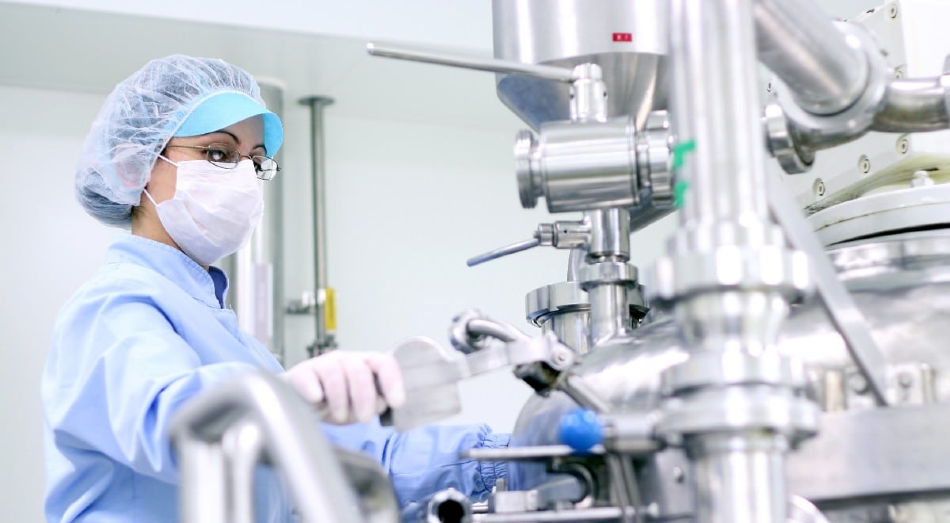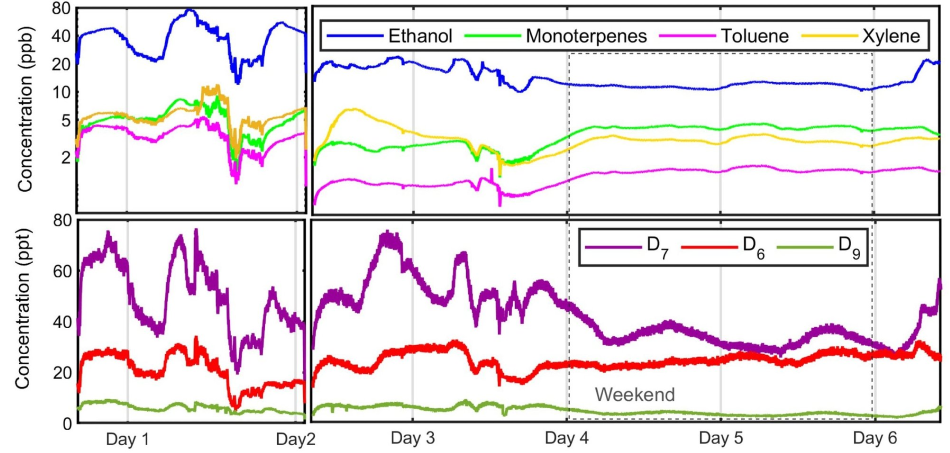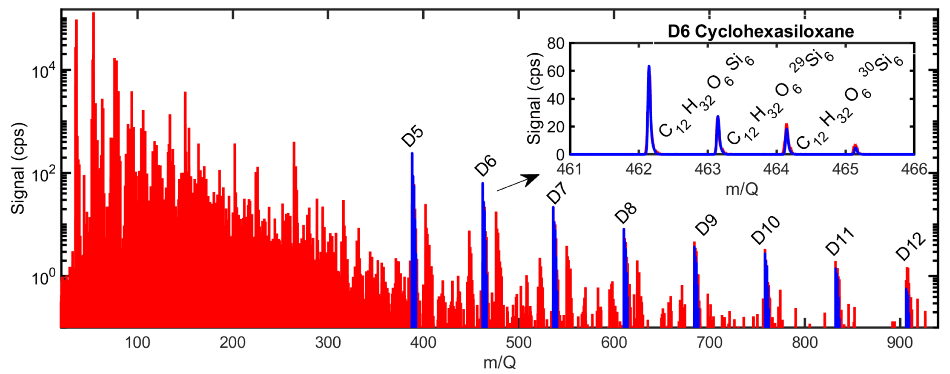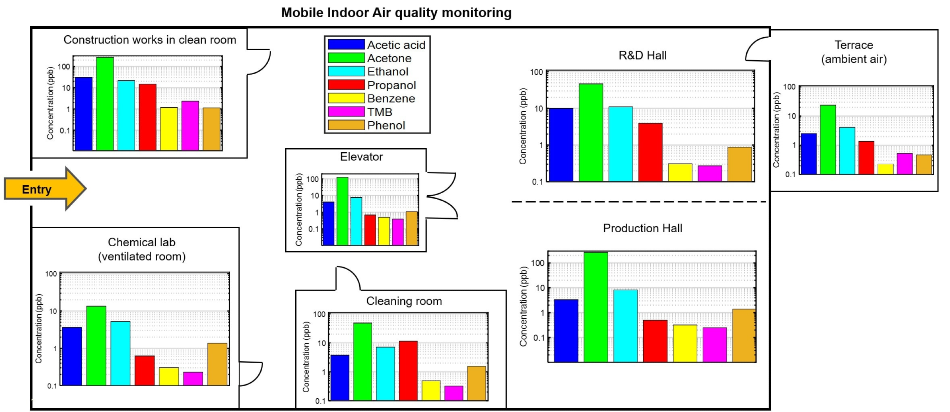
Image Credit: TOFWERK
The indoor air quality of a workplace environment was monitored for 2 weeks using a Vocus CI-TOF. Accurate identification of target species was facilitated by the TOF mass spectrometer’s high resolving power along with a variety of soft ionization modes. The instrument’s portability also allowed measurements to be carried out in a range of indoor areas over a short period of time.
Indoor Air Quality
Whether they are working or at home, the majority of people spend most of their time indoors. As a result, the quality of indoor air is extremely important. The quality of air can affect people’s health, comfort, and work performance.
However, there are thousands of volatile organic compounds (VOCs) in indoor air. Typically they are released by construction materials, the use of volatile chemical products, or by industrial processes [1]. Volatile organic compounds can build up and have negative effects on human health and contaminate sensitive work environments because of a variety of factors, including large wall surface areas, building insulation, and insufficient building ventilation.
According to the World Health Organization (WHO), air pollution, including indoor air, is one of the top five risks to public health [2].
It is essential to be able to monitor VOCs in real-time in order to evaluate and control human exposure to potentially dangerous levels of indoor air contaminants. Monitoring can also help to improve poor indoor air quality by identifying and providing a deeper understanding of the sources of pollutants in indoor air.
Real Time Measurement of Indoor VOCs by Vocus CI-TOF
The Vocus CI-TOF is a fast, sensitive, and robust instrument that boasts the ability to monitor hundreds of VOCs in the air at sub ppb concentration simultaneously. The high resolving power of the TOF mass spectrometer paired with a range of soft ionization modes accurately identify target species. No sample preparation is required because the air is measured directly, a practice that is in direct contrast to widely used sorbent tube GC-MS sampling. Not only is this conventional method offline, it is far slower and requires sample preparation to work.
To monitor the time evolution of the indoor air species found in a working environment, the instrument was situated in the TOFWERK R&D and production facility for a period of 14 days. The instrument was used in both traditional proton transfer reaction (PTR) mode and in NH4+ mode. This means less fragmentation takes place, and it was possible to target a higher number of oxygenated species.

Figure 1. PTR-mode measurement of ethanol, monoterpenes, toluene, and xylene (top panel) and several cyclosiloxanes (bottom panel) over a period of a week in an industrial facility. Image Credit: TOFWERK
Figure 1 illustrates one example of PTR measurement of particular common indoor air pollutants. The patterns seen in the concentration over 24 hours, which show higher concentrations during the day and lower concentrations at night, are easily correlated to the daily working hours and industrial activity. Over the weekend period, the concentration can be seen to be reduced by factor 2-5.
Figure 2 shows a mass spectrum of indoor air measured by the Vocus CI-TOF in NH4+ mode. Hundreds of species have been detected simultaneously, the concentrations of which span over three orders of magnitude. Highlighted is a clear pattern of siloxanes observed up to 900 m/Q. It was even possible to measure D12 siloxane (C24H72O12Si12) quantitatively with an average mixing ratio of a few ppt.
Siloxanes are highly stable and volatile chemicals. They are widely used as additive ingredients in plastics, lubricants, oils, and cosmetics. In these experiments, the most intense siloxane observed was dodecamethylcylcopentasiloxane (D5), a compound that is commonly detected in urban air and is associated with personal care products [3].
As Vocus CI-TOF measures the whole mass spectrum simultaneously, it is possible to use the specific isotope pattern of siloxanes to confirm their elemental composition.

Figure 2. Mass spectrum of indoor air measured by the Vocus CI-TOF in NH4+ mode. Series of siloxanes commonly present in an industrial environment are highlighted blue. Image Credit: TOFWERK
Mobile Indoor Air Quality Measurement
The VOC levels in various indoor areas can be investigated within a short period of time because the instrument is portable. This flexibility in measurement can generate useful information on potential leakages or contaminations in a working environment. Figure 3 demonstrates the results of mobile measurements that were carried out with the Vocus in numerous parts of the industrial hall within 30 minutes.
The concentrations are shown on a log scale. They can vary by factor of 5 - 10 depending on the area of measurement. The rooms that were fitted with active ventilation, for instance the chemical lab, presented the lowest VOC levels, which could be compared to ambient air.
The cleaning room showed high levels of propanol, which were presumed to stem from the cleaning and disinfectant chemicals stored in the room. Overall, the highest concentration of VOCs was detected in the clean room, where along with the cleaning products, construction and painting works were being carried out.

Figure 3. Concentration of selected VOCs on a log scale measured during mobile measurement in six separated industrial areas. Image Credit: TOFWERK
Acknowledgments
Produced from materials originally authored by Veronika Pospisilova Felipe Lopez-Hilfiker from TOFWERK.
References
[1] Mcdonald, B. C. et al. Volatile chemical products emerging as largest petrochemical source of urban organic emissions, Science 359(6477): 760-764, 2018. doi: 10.1126/science.aaq0524
[2] World Health Organization, “Ten threats to global health in 2019”, Newsroom Feature Stories, https://www.who.int/news-room/spotlight/ten-threats-to-global-health-in-2019, date of last access 7 May 2020.
[3] Coggon, M. M. et al. Diurnal Variability and Emission Pattern of Decamethylcyclopentasiloxane (D5) from the Application of Personal Care Products in Two North American Cities. Environ. Sci. Technol, 2018. doi: 10.1021/acs.est.8b00506

This information has been sourced, reviewed and adapted from materials provided by TOFWERK.
For more information on this source, please visit TOFWERK.